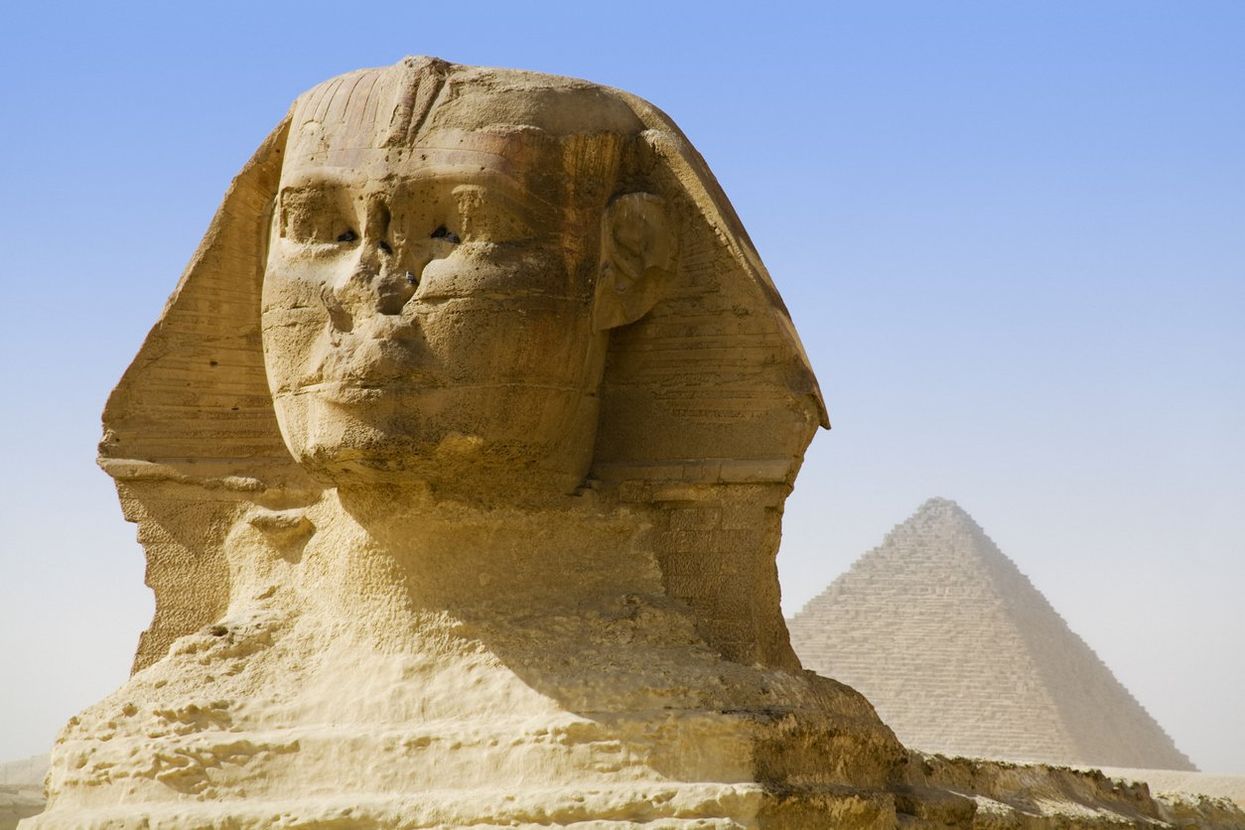Science & Tech
Harriet Brewis
Nov 01, 2023
Soar over Egypt's Pyramids and Sphinx in this stunning video
New York Post / VideoElephant
The feats achieved by the Ancient Egyptians have long flummoxed even the most renowned experts.
For example, how on earth did they build the Great Pyramid of Giza? It’s taken centuries for scientists and archaeologists to come up with an answer, and even that’s not set in stone.
But now, researchers believe they’ve finally worked out how the Great Sphinx was made more than 4,500 years ago.
Sure, there’s a pretty broad consensus about how the face of the giant limestone statue was created – it was most likely hand-carved by stone masons.
But the imposing, multi-layered body had continued to evade explanation.
However, researchers at New York University, have finally concluded that the body came about. And it wasn’t all thanks to the masonry skills of local workers.
They believe that the shape was sculpted by Mother Nature herself, in the form wind.
“Our findings offer a possible ‘origin story’ for how Sphinx-like formations can come about from erosion,” Leif Ristroph, senior author of the study, said in a statement.
“Our laboratory experiments showed that surprisingly Sphinx-like shapes can, in fact, come from materials being eroded by fast flows.”

For their study, the team took harder rock encased in mounds of soft clay to mimic the terrain along the Nile River in northeastern Egypt.
They then washed over these formations with a fast-flowing stream of water to replicate the wind and, in the end, the clay assumed a Sphinx-like shape.
The resulting form consisted of a lion’s “head,” “neck,” “paws” laid out in front and an arched “back".
“There are, in fact, yardangs (rock features formed by air erosion) in existence today that look like seated or lying animals, lending support to our conclusions,” Ristroph pointed out.

Still, we’re sure Ristroph would be the first to admit that he and his colleagues weren’t the first to come up with the aeolian erosion theory.
In 1981, geologist Farouk El-Baz suggested that the iconic Sphinx was originally a flat-topped shape that was worn down by wind over time.
Furthermore, El-Baz believed that the builders of Ancient Egypt would have known of these natural processes, and so carefully selected the shapes of their most iconic structures to withstand them.
"Today, the pyramids of Giza exist in perfect harmony with their windy environment," the scientist said back in 2001.
"Had the ancients built their monuments in the shape of a cube, a rectangle, or even a stadium, they would have been erased by the ravages of wind erosion long ago."
Nevertheless, the New York University team were the first to show exactly how this phenomenon could have occurred, and their findings have broader implications.
"The work may also be useful to geologists as it reveals factors that affect rock formations—namely, that they are not homogeneous or uniform in composition,” Ristroph said.
"The unexpected shapes come from how the flows are diverted around the harder or less-erodible parts."
Sign up for our free Indy100 weekly newsletter
Have your say in our news democracy. Click the upvote icon at the top of the page to help raise this article through the indy100 rankings
Top 100
The Conversation (0)














